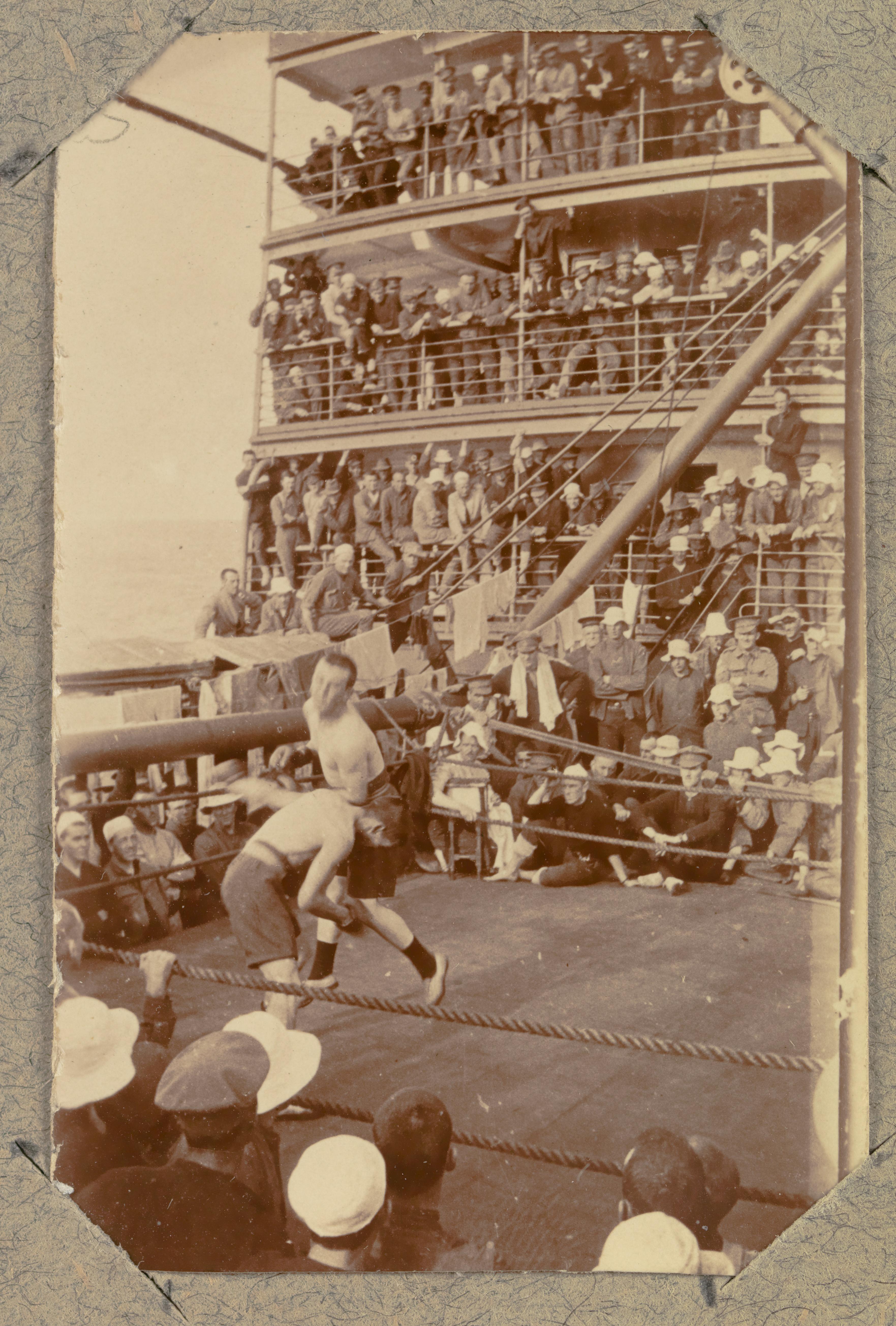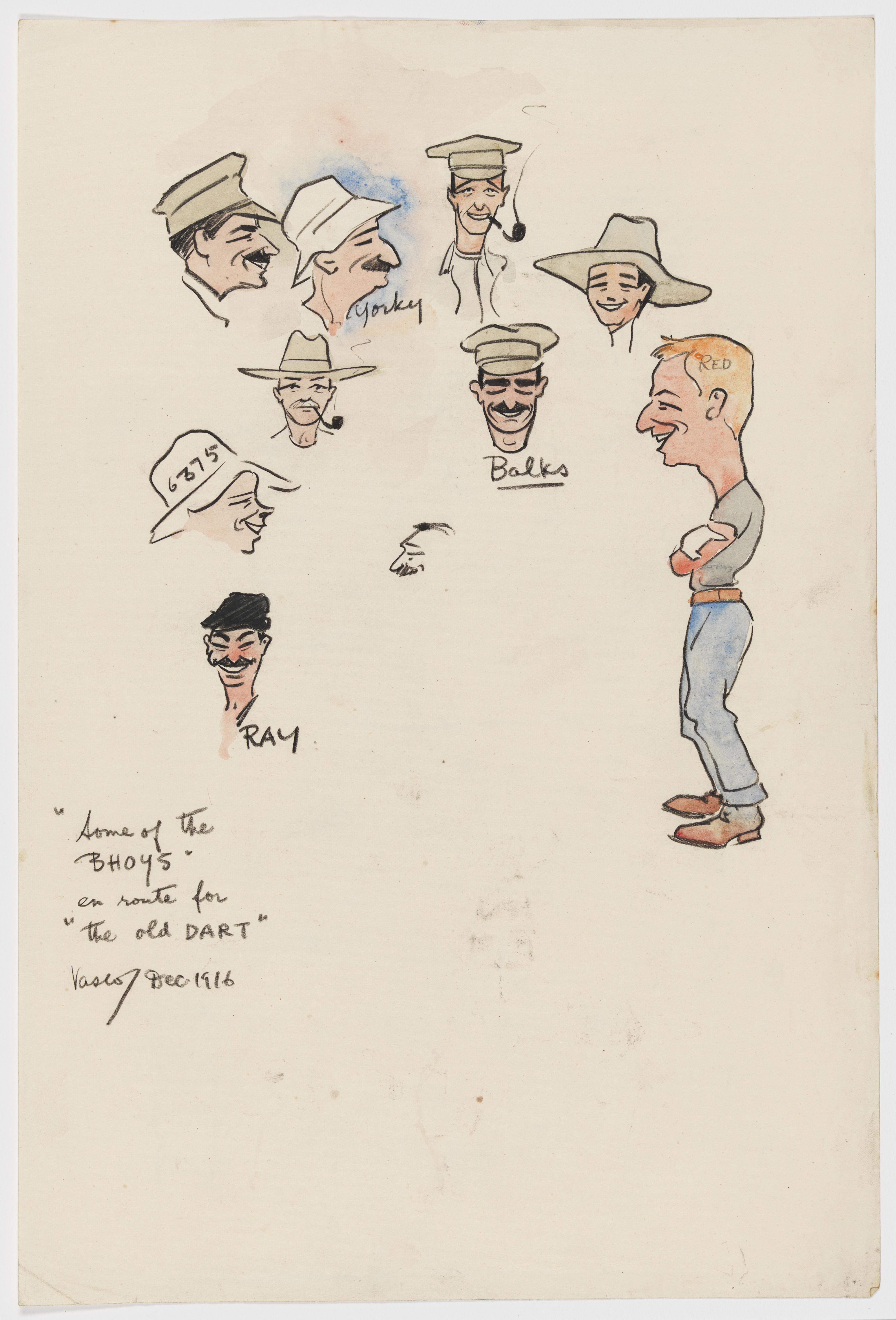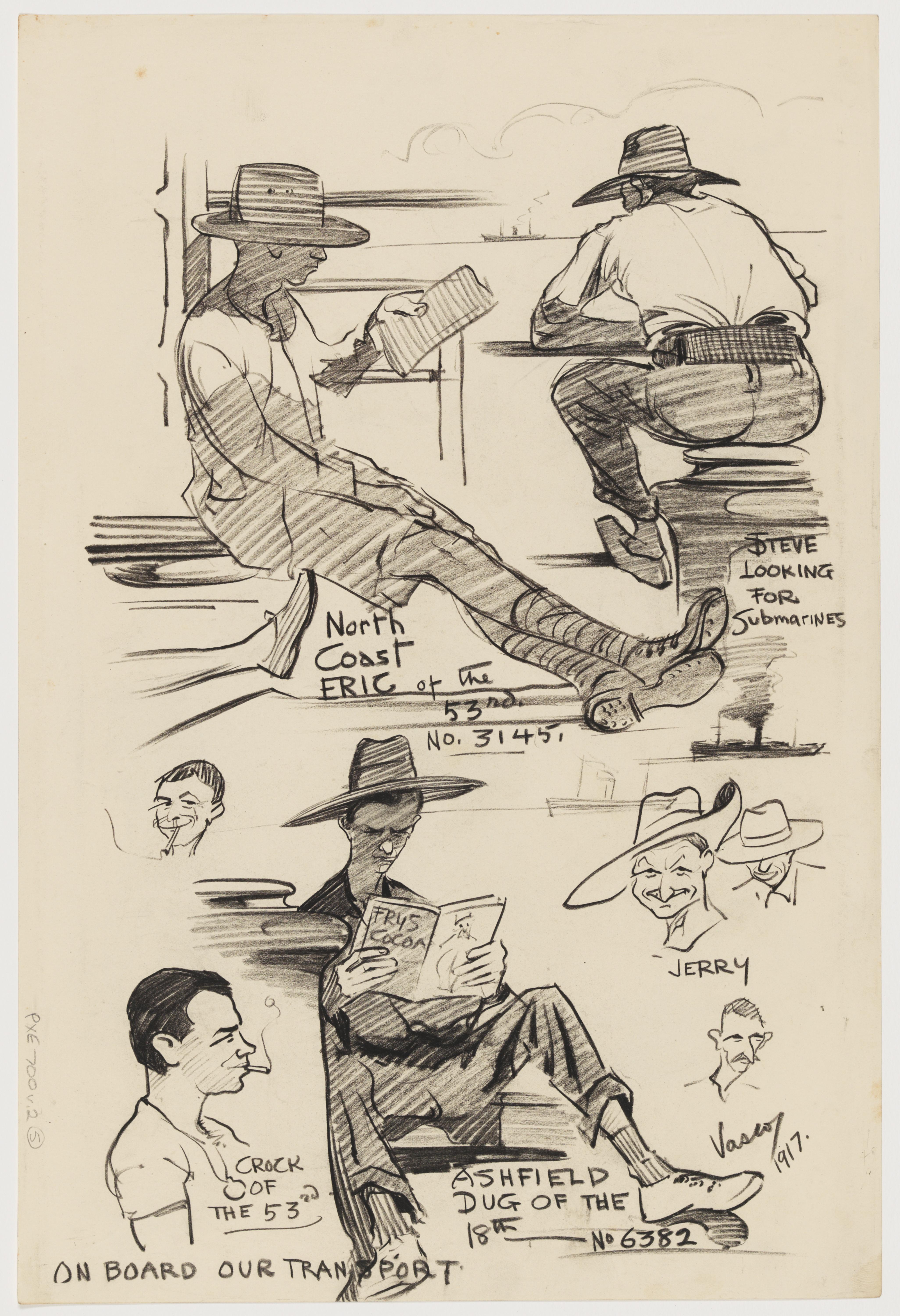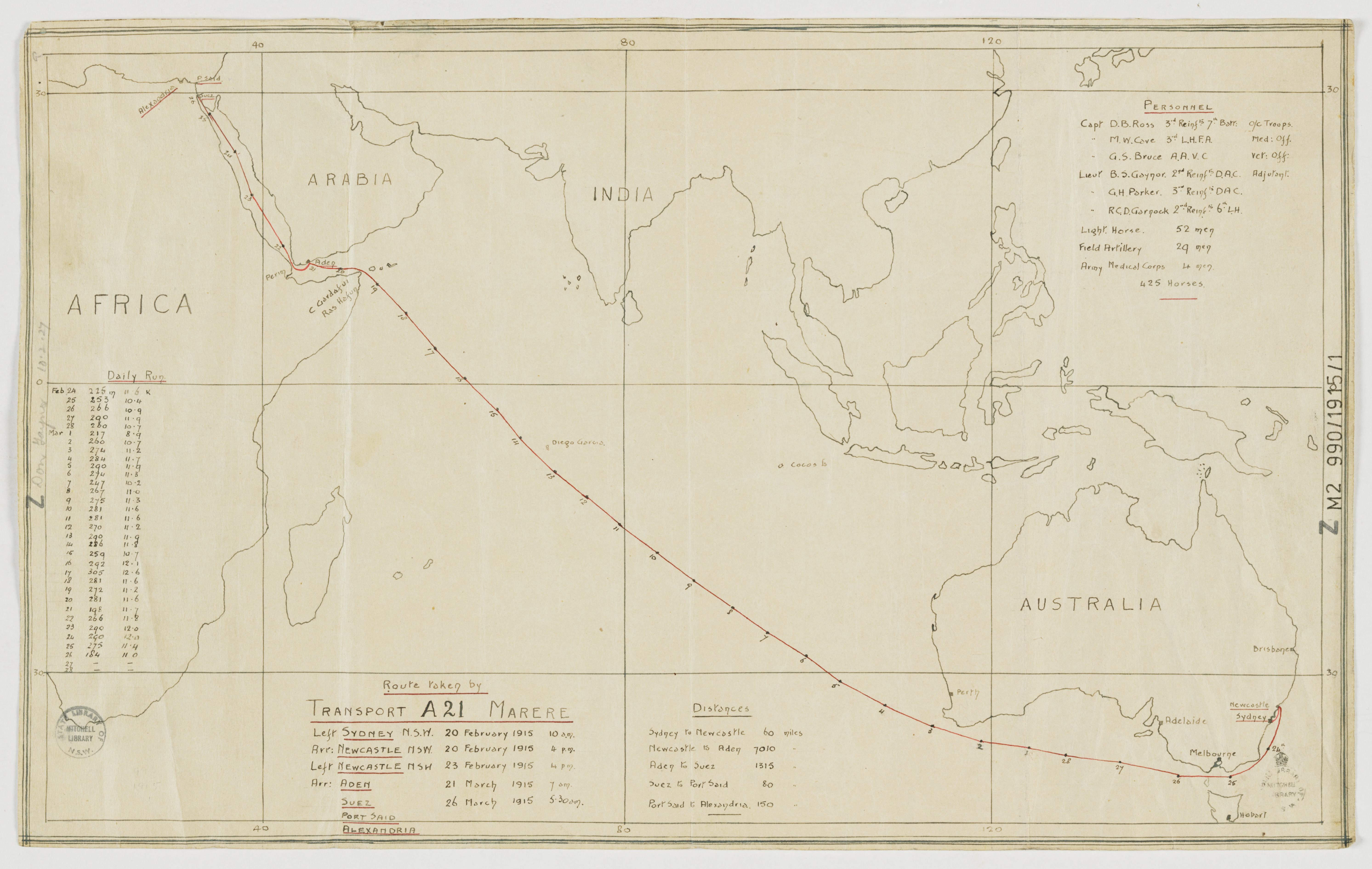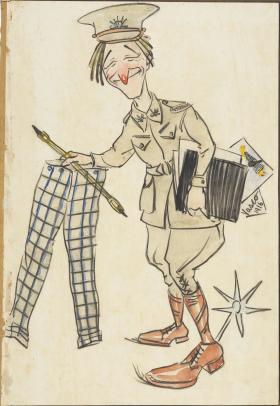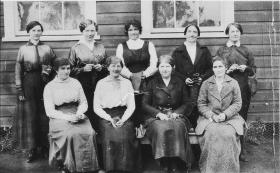After the excitement of enlistment, training and farewells some feelings of boredom were inevitable among the troops. To alleviate the monotony on the ship, sports carnivals were held, with boxing matches and games such as pillow fights and wheelbarrow races.
The crossing the Equator ceremony, ‘Neptune’s journey’, was played out on each troopship as it headed north. Passengers were often covered in tar and then dunked in water. Soldier Archie Barwick described the ceremony on his ship, A19 Afric.
Our next bit of excitement was crossing the Line, we had a great big canvas bath fitted, and filled with salt water, and some of the officers were dressed in all sorts of costumes, we had a father Neptune (Capt Swanell) … and then special constables, who had been duly initiated, that is ducked, were told off by Father Neptune and his Court to arrest all & sundry ...
… when they got them to the tank they shot them in clothes and all on and when you came up some of Neptune’s slaves shoved you under again with a pole until you were nearly drowned and when you went to get out, they were there to help you with hands all over grease and tar ...
... once you had been through Neptune’s hands you were free to go and help the others drag them in ... Water & wet towels were the only weapons that were legal and the deck was a mass of flying towels …
One way to pass the time on a troopship was to draw. Here are some of the ‘bhoys’: Yorkey, Balks, Red and Ray. North Coast Eric is stretched out reading as too is Ashfield Dug. Steve is looking for submarines – or is he dreaming about home?
Loureiro Vasco – who changed his name to the more conventional Louis when he enlisted – spent his time on the Suevic drawing his shipmates. A professional cartoonist, he had trained at the National Gallery of Victoria School and produced artwork for postcards in Melbourne, Sydney and in the United States.
Ellis Silas, a fledgling signaller on board the transport A40 Ceramic and an artist before enlistment, filled the time by reading, sketching and painting.
25 December, Christmas Day
All day painting and reading. Fruit is given us as a little extra – I presume no day of any importance could be such unless there were something extra for the inner man.6 December
Usual routine – meals, drill, etc., how I hate signalling! At night I try to read the ship’s signalling with lamps – I feel in despair, I cannot read six words – wonder if I ever will. Sketching as usual; as I use my pencil whenever I get a chance …One morning, just before Reveille, went to get some tea; it was given me in a metal cup which I cannot drink out of; I said to the cook, “Wait a minute, I`ll get a china cup” – this was too much for the lads, who immediately began to call out for their valets and shaving water! I never heard the end of this incident for some days.
The original sketch (below) was made by Captain Brian Gaynor, of the 2nd Field Artillery Brigade, who served in Gallipoli and France. His map shows the route taken, with daily progress, by the Transport A21 Marere from Sydney through the Indian Ocean to the Suez Canal and Egypt. The map also has a list of AIF personnel on board, along with the numbers of horses.
Elise Edmonds, Senior Curator, Research and Discovery
Collections:
Barwick diaries, 22 August 1914 - 26 January 1919 by Archie Barwick, MLMSS 1493
Silas diary, 1914-1916 by Ellis Silas, MLMSS 1840
Vasco Loureiro World War I sketches, 1915-1918, PXE 700/vol. 1
Ragtime sketches on board our transport, by LoureiroVasco, 1917, PXE 700/vol. 2
Route taken by Transport A21 Marere, by [Captain Brian Gaynor], Z/M2 990/1915/1

